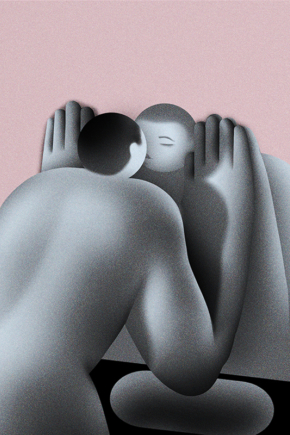In their illustrations, Alva Skog portrays the exaggerated figures of women and non-binary people, giving them authoritative dominance with towering stances, strong bodies, and huge powerful hands. We talk to Alva about the pressures of short deadlines, how their personal projects have influenced their approach to drawing and representing people, and how important their illustration agency has become to them.
You’ve had a roller coaster couple of years since you graduated from London's Central Saint Martins university. If you could time travel, is there any advice you’d go back and give yourself?
Weirdly, no. I was very prepared for graduating and going out into the industry. I think that because I was a few years older than my classmates, and because I’d done a two year course in Fine Art before starting my Bachelor’s, I had the tools to prepare myself for going out into the industry. I was not necessarily aware of it then, but I can see now that my journey so far has been rather smooth. Rather than giving any advice, I would reassure myself that the hard work and dedication will pay off.










